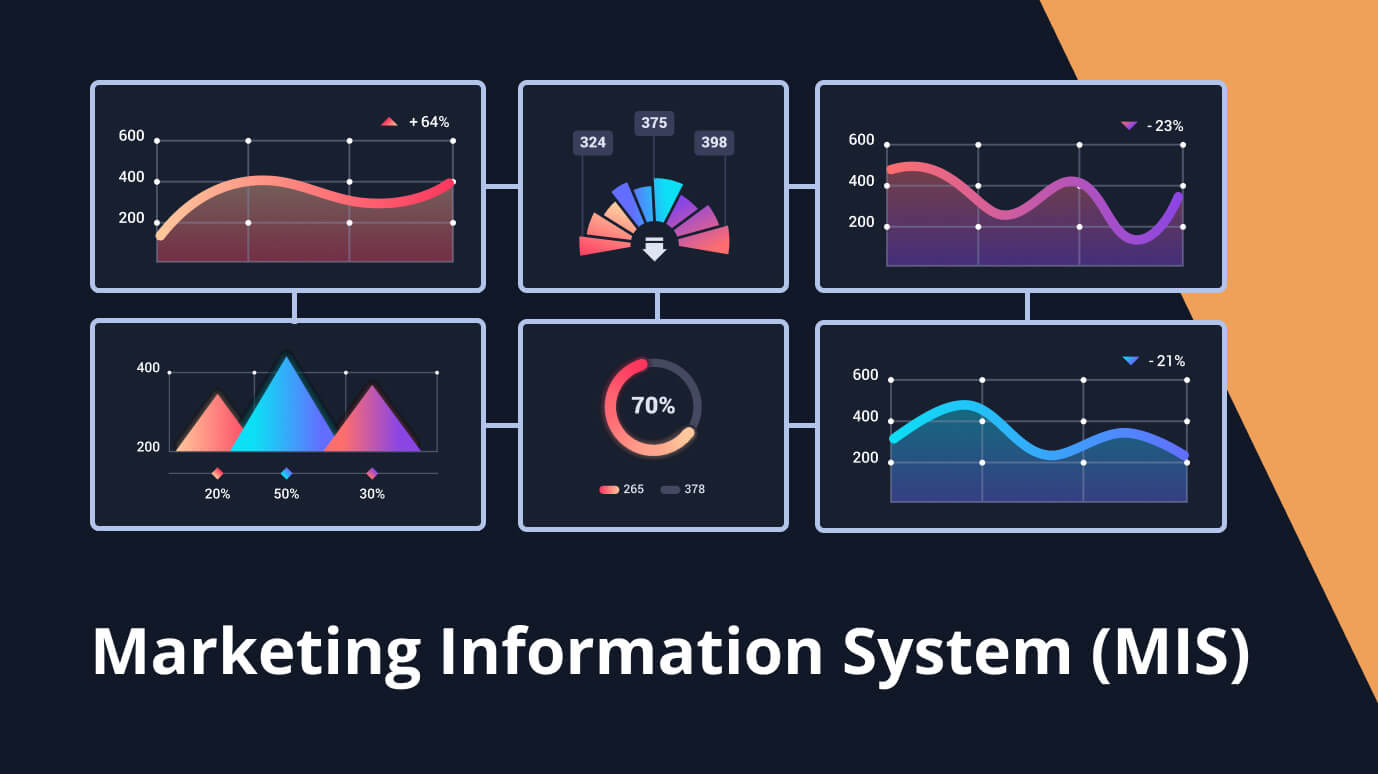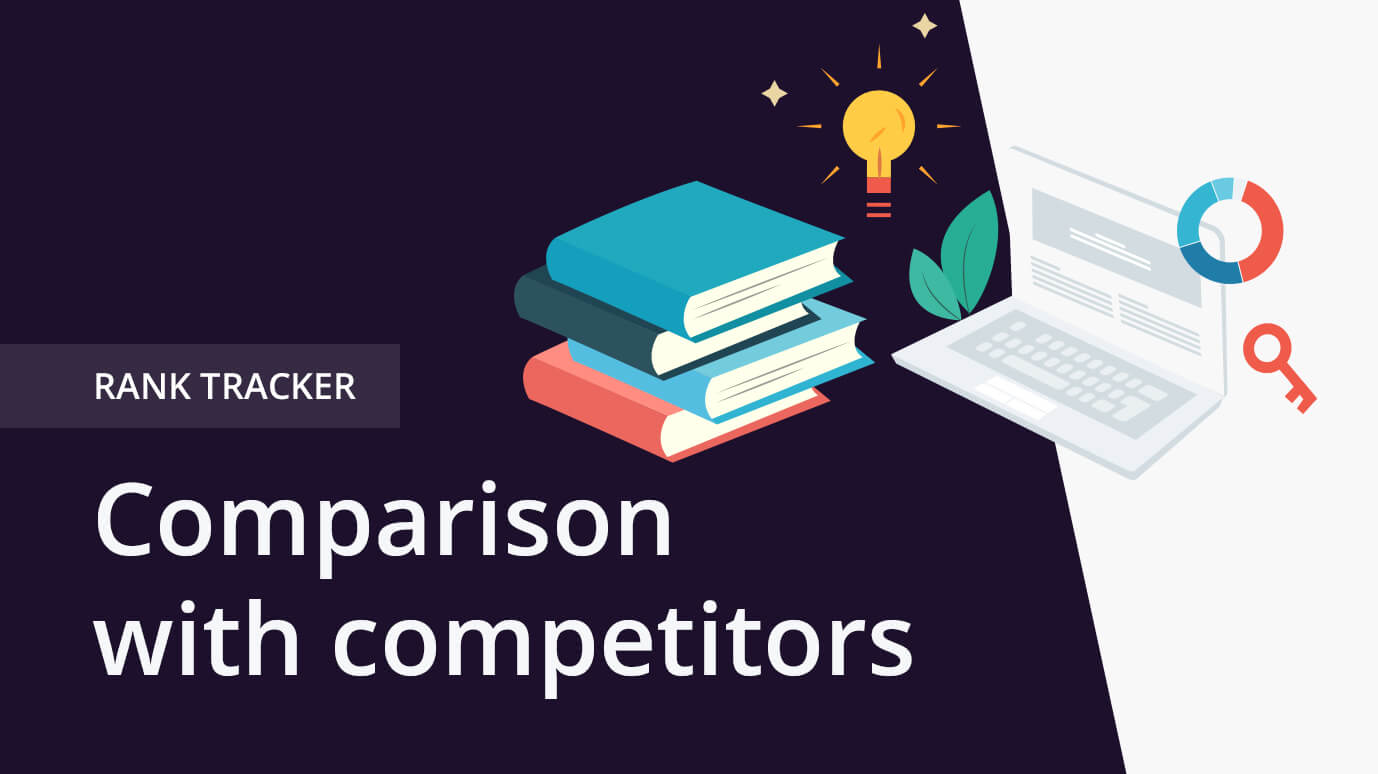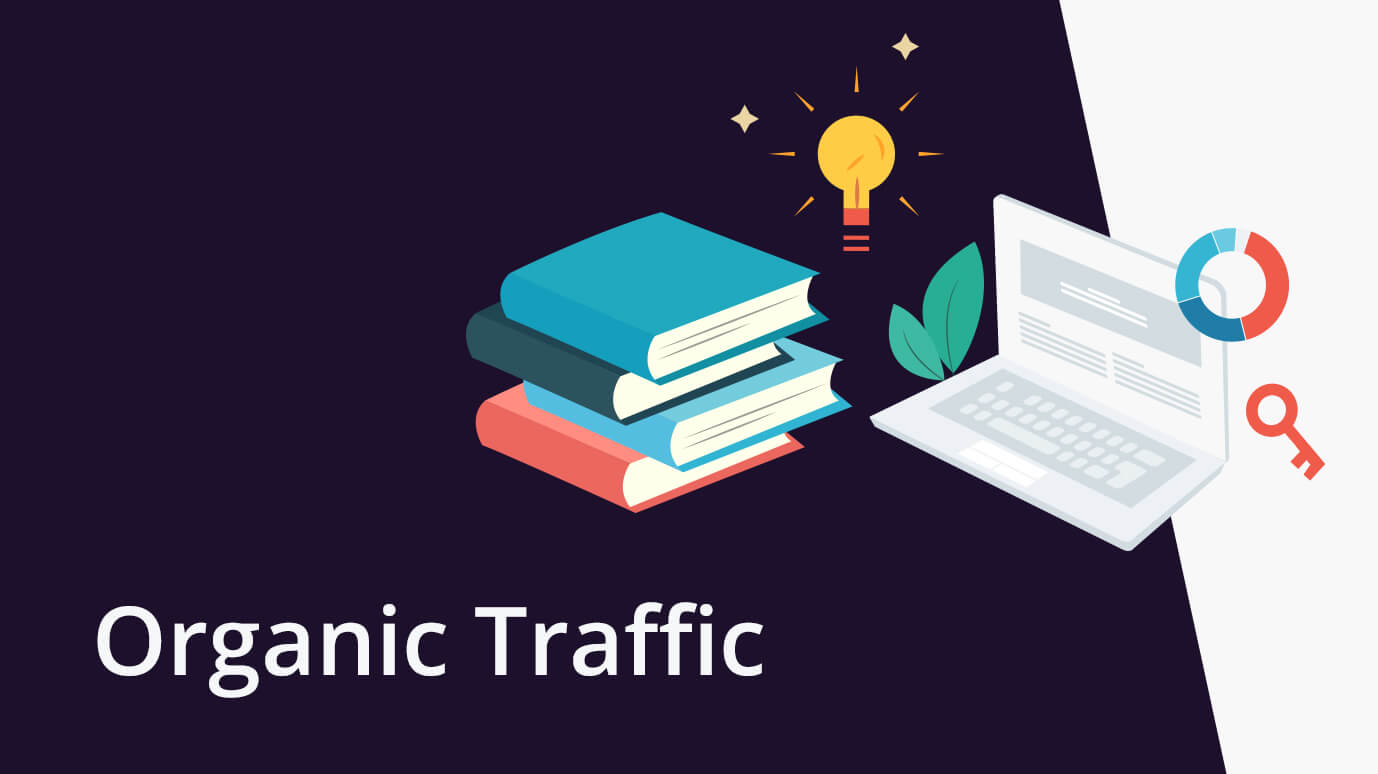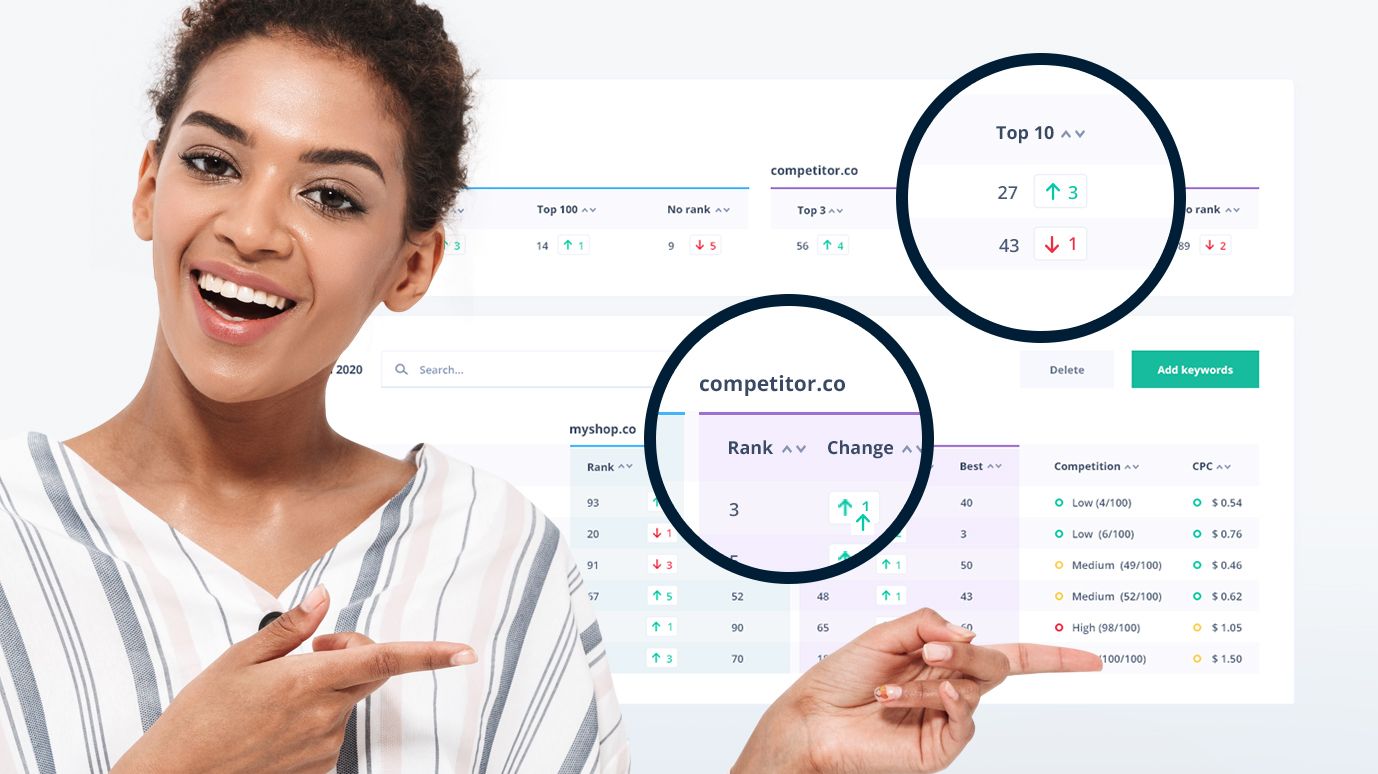
 7 min read
7 min readUnlock the Power of Keyword Gap Analysis with Seodity: A Comprehensive Guide
Keyword gap analysis compares the keywords used by your competitors to those used on your website. This analysis can help identify the keywords that your competitors are ranking for but you are not. By identifying these "gaps" in your keyword strategy, you can adjust your website and content to target those keywords and improve your search engine rankings.
Using Seodity's Organic Traffic module and choosing the Keyword Gap method, you can quickly compare your website's keywords to your competitors and get valuable data in a matter of seconds.
The process of conducting a keywords gap analysis with Seodity
First, log in to your Seodity account and navigate to the "Organic Traffic" tab.
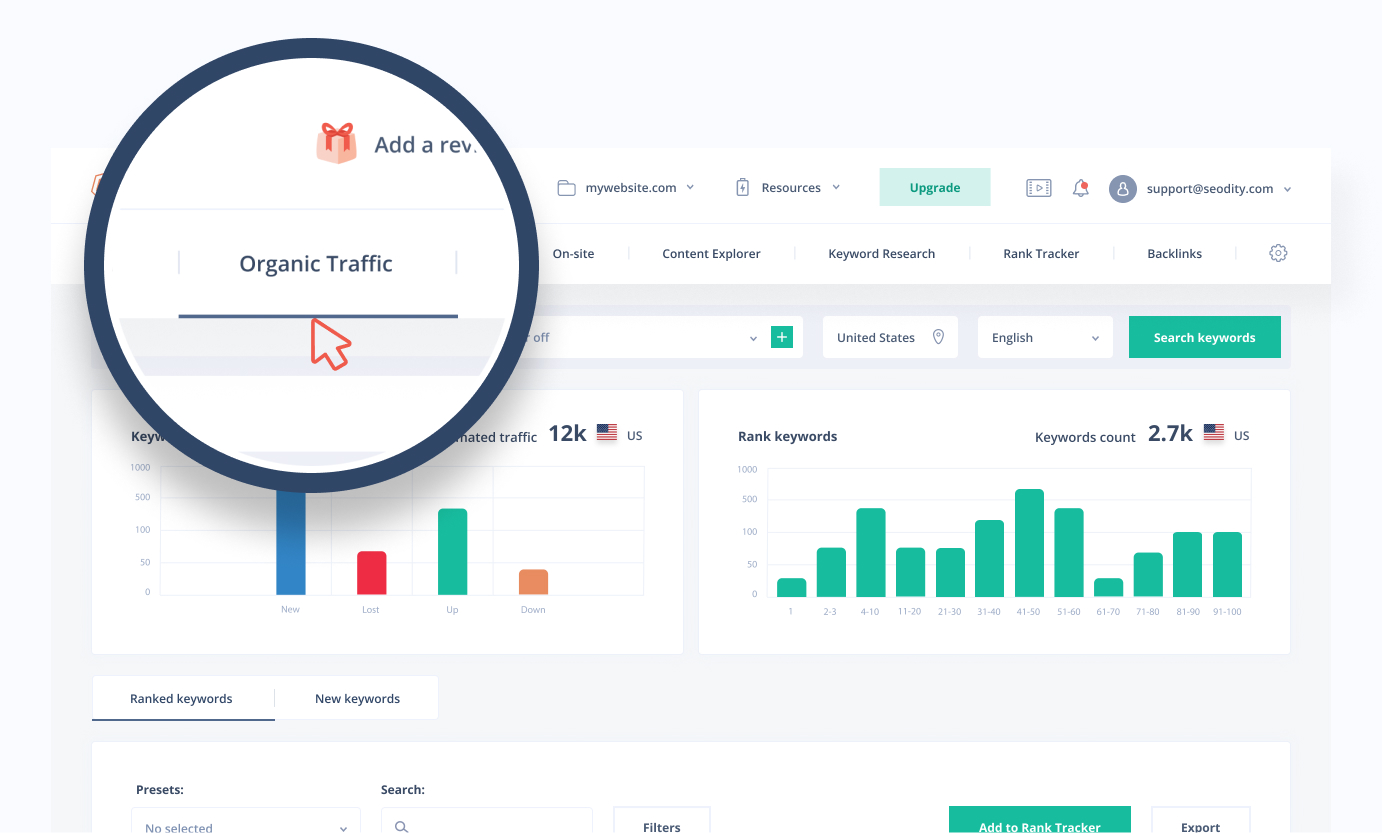
Next, select the competitor's website to which you would like to compare your keywords.
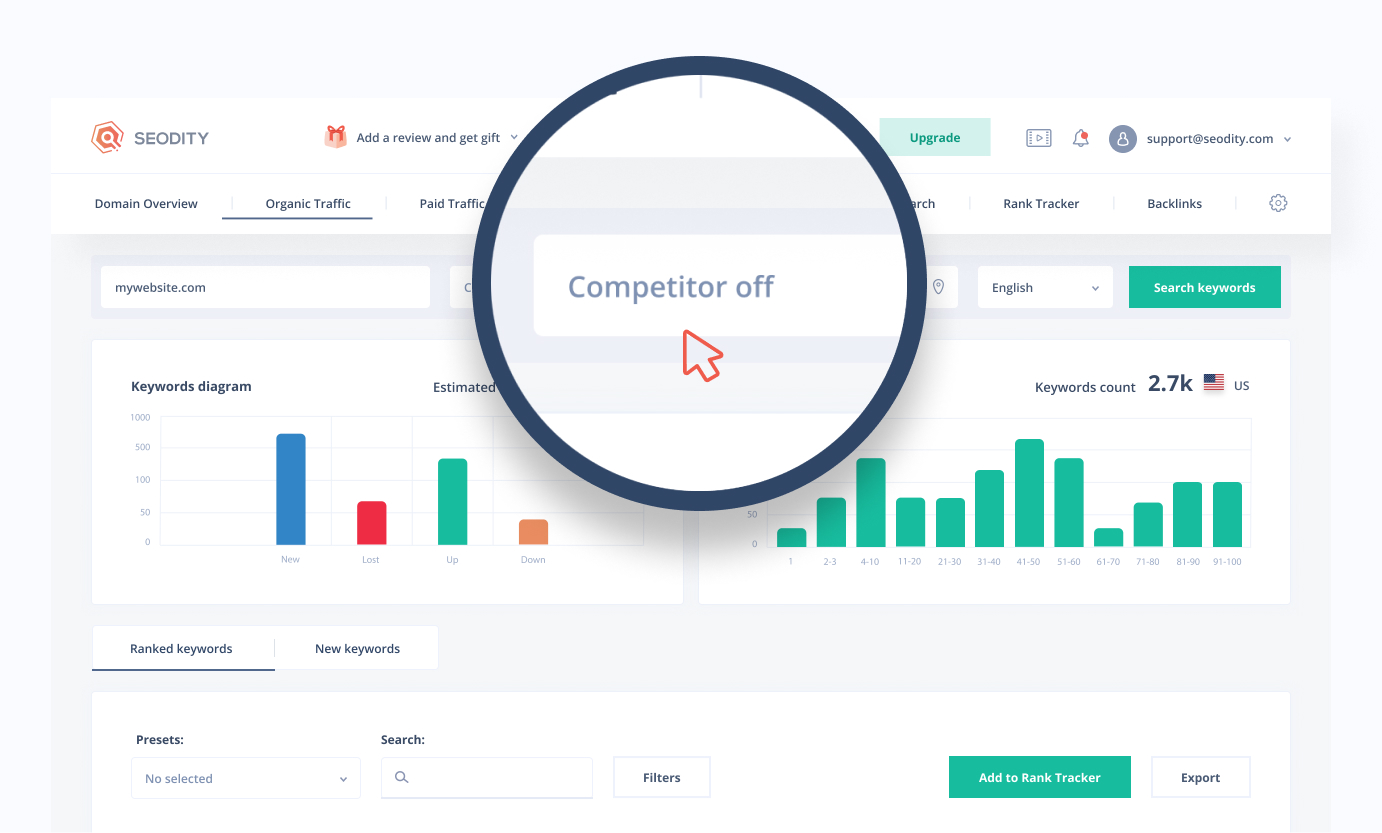
By default, Seodity will have the "Keyword Gap" method selected, but you also have the option to choose the "Keyword Intersection" method.
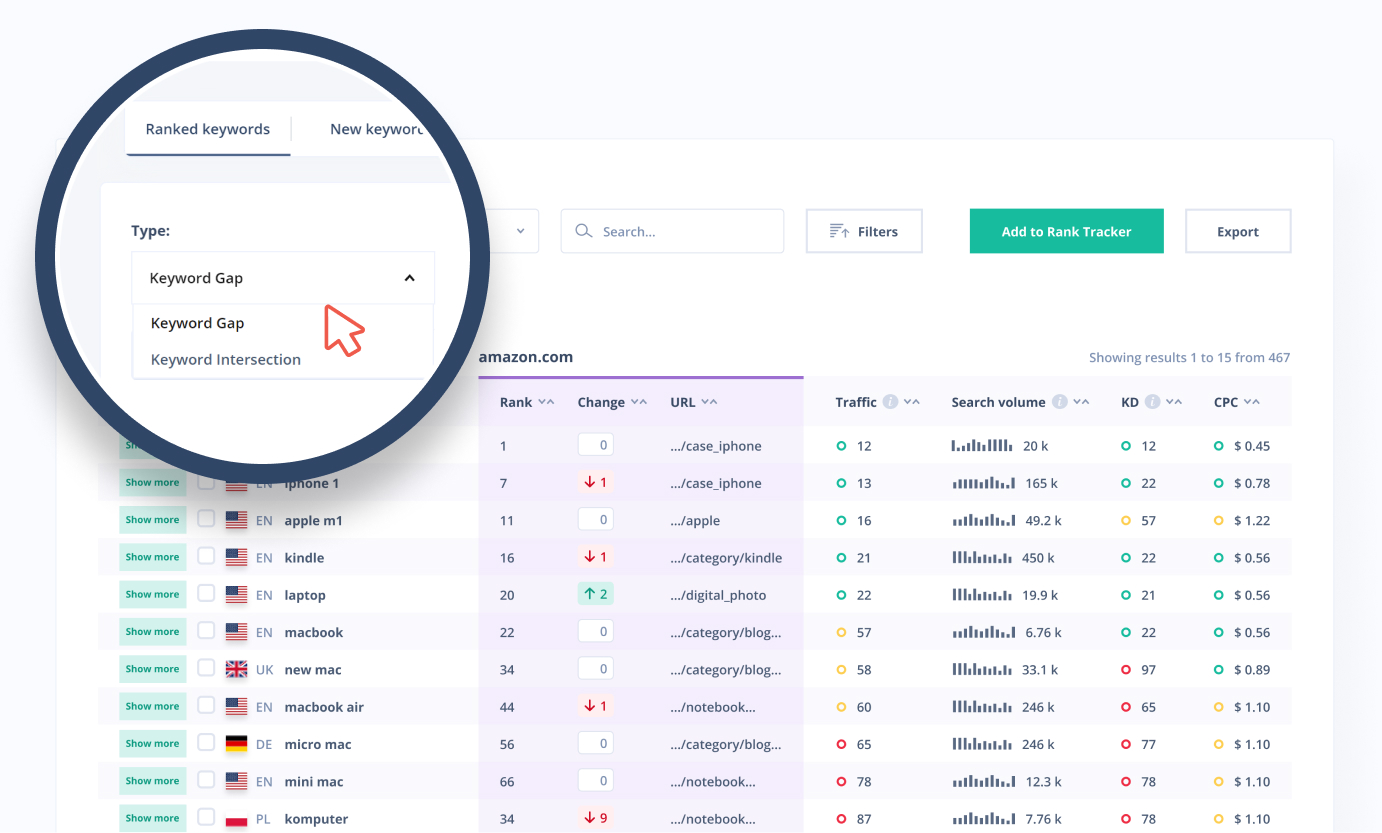
Once you have selected the desired method, you can implement filters such as rank, search volume, keyword difficulty, and CPC to narrow down the results and get a more accurate analysis.
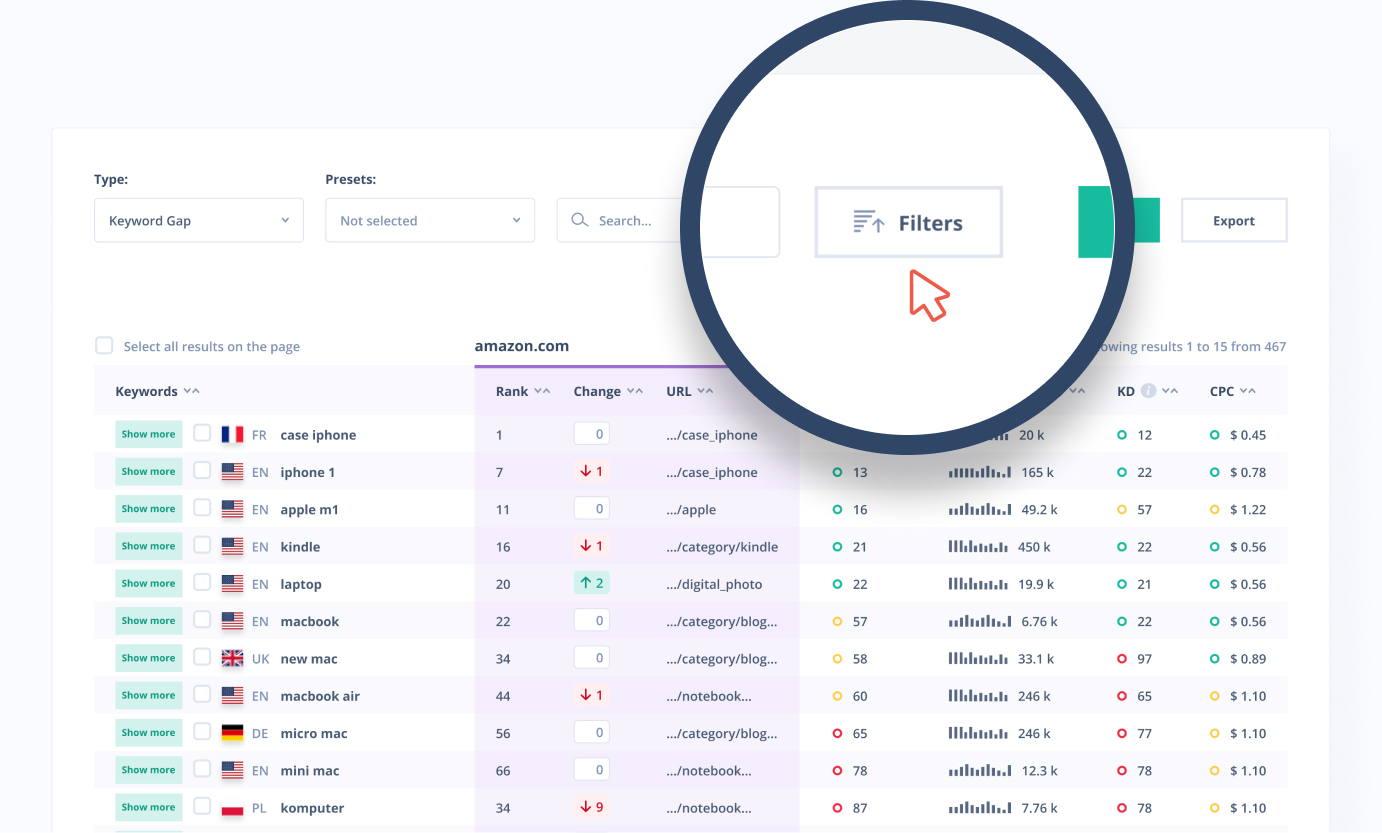
After applying the filters, Seodity will generate a report that shows the common keywords between your website and your competitor's, as well as the keywords that your competitor is ranking for that you are not. This will give you a clear picture of where your competitor outperforms you and where you can improve.
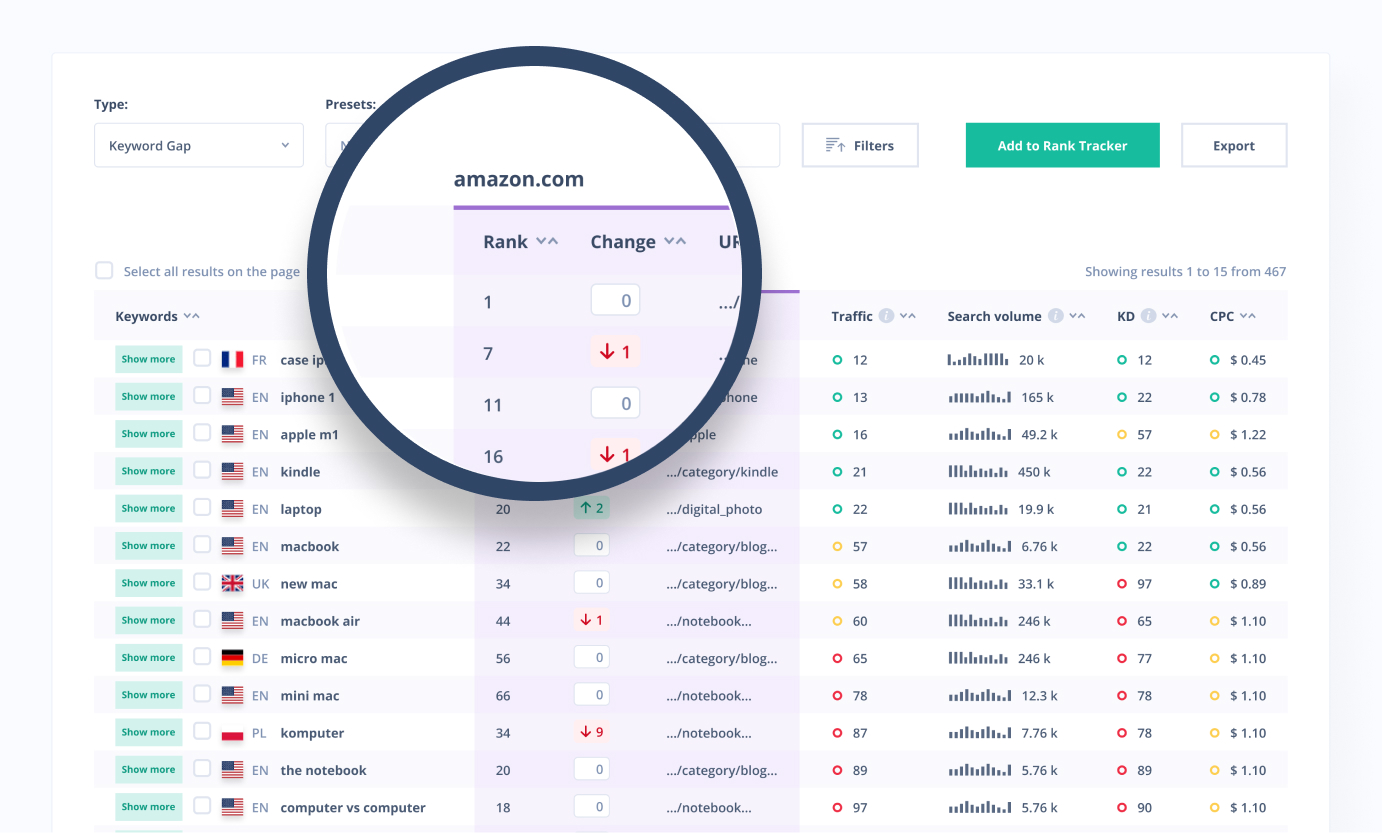
You can then use this information to optimize your website's keywords, improve your content and target those areas where your competitor is winning.
And that's it! With Seodity's keyword gap analysis, you'll have the insights you need to outrank your competition.
How do we use this competitive analysis?
Keyword gap analysis can be used to inform the creation of new content as well as the optimization of existing content. When creating new content, you can use the keywords you've identified as gaps to ensure that your content addresses topics your competitors are already ranking for. This can help you to fill in any content gaps on your site and improve your chances of ranking for those keywords.
When optimizing existing content, you can use the keyword gap analysis to identify any keywords you are not currently targeting. Then you can update your existing content to include those keywords, naturally integrating them into your text.
How to reveal valuable insight into competitors' strategies?
For example, let's say you own an e-commerce store that sells outdoor gear. After conducting a keyword gap analysis with Seodity, you discover that your main competitor ranks highly for "hiking boots," but you do not. This could indicate that your competitor has a strong presence in the hiking market and that you should consider creating more content and products related to hiking to compete better.
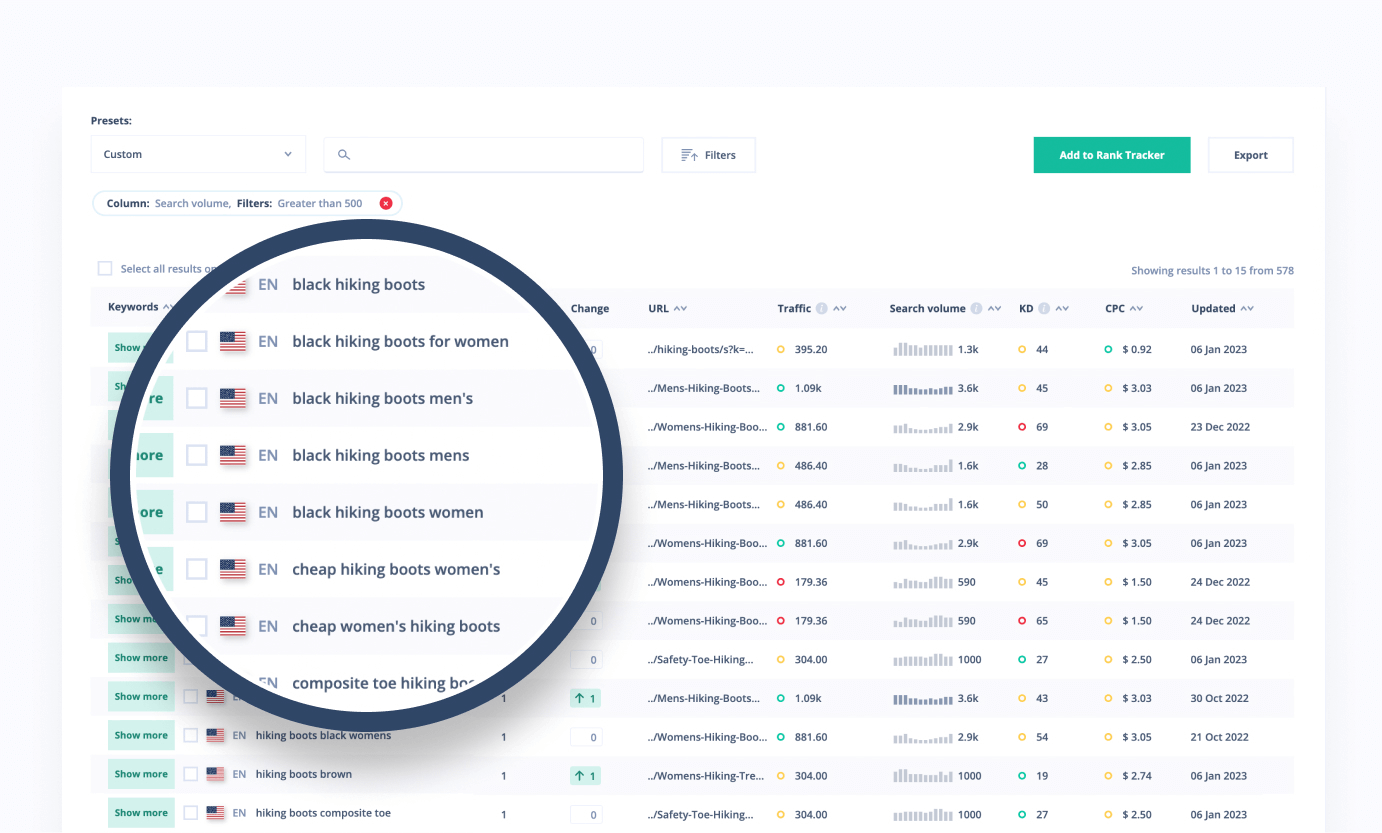
By identifying common keywords among all competitors, you can better understand what topics and themes are popular within your industry and adjust your content strategy accordingly.
So, don't stop analyzing one competitor but at least a few to get a bigger picture.
Tips and best practices for using Seodity's keyword gap
Use a variety of filters to narrow down your keyword research. Seodity offers a variety of filters, such as rank, search volume, CPC, and keyword difficulty, that can help you focus on the most valuable keywords for your business.
Regularly check your competitors' keywords. By monitoring your competitors' keywords regularly, you'll be able to stay on top of the latest industry trends and changes in search behavior. To do that, use Seodity's Rank Tracker and track your competitors daily.
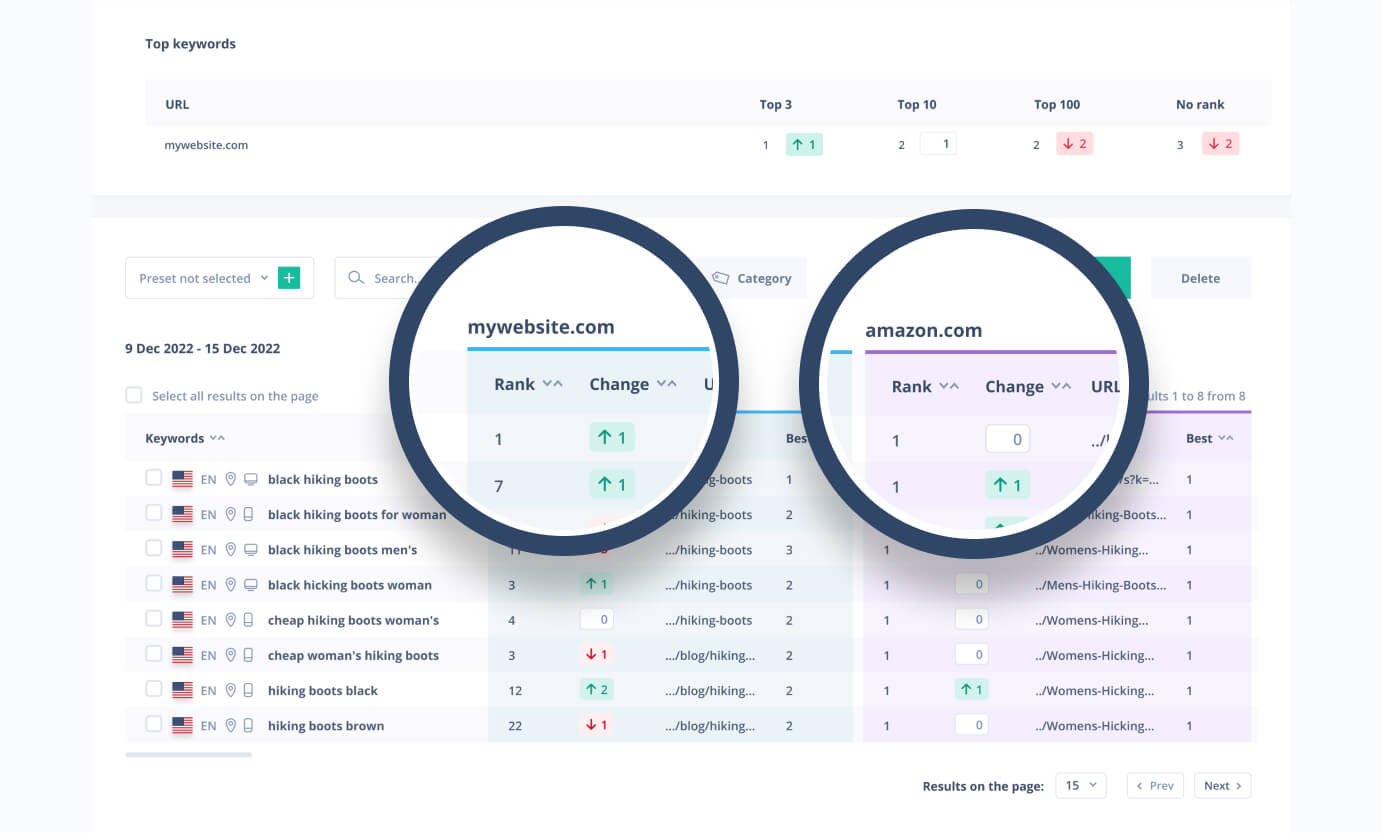
Focus on long-tail keywords. Long-tail keywords tend to have lower keyword difficulty and can be a great way to target specific niches within your industry. Use Seodity's keyword research tool to find long-tail keywords related to your business and products.
Use the keyword gap analysis to identify new opportunities for local SEO. By placing keywords relevant to your business but not currently targeting, you can create new content and optimize your website to target those keywords and drive more traffic to your website from local searches.
FAQ
How to do a content gap analysis?
To conduct a content gap analysis, follow these steps:
a. Identify your competitors: Research and list the top 3-5 websites competing for the same audience and keywords as your website.
b. Analyze their content: Review their websites and blogs to understand the topics they cover and the keywords they target.
c. Use SEO tools: Utilize tools like Seodity, Ahrefs, SEMrush, or Moz to identify the keywords your competitors are ranking for, but you aren't.
d. Prioritize keywords: Filter and prioritize keywords based on search volume, relevance, and keyword difficulty.
e. Develop a content strategy: Create a plan to create new content or optimize existing content, targeting the identified keywords.
What is a content gap analysis?
Content gap analysis is a strategic process that helps identify missing or underperforming content on your website compared to your competitors. It involves analyzing your competitors' content and keywords to uncover opportunities for improving your content, increasing visibility, and driving more organic traffic.
What is the difference between gap analysis and competitors?
Gap analysis compares your current performance against your desired performance, while competitor analysis involves examining your competitors to understand their strengths and weaknesses. Content gap analysis combines these two concepts by comparing your content and keyword performance against your competitors to identify opportunities for improvement.
What is a gap analysis example?
A gap analysis example would be comparing the organic search performance of your website against your top competitors. By analyzing the keywords they rank for and the content they produce, you can identify opportunities to create new content or optimize existing content to target those keywords and increase your visibility in search results.
How do you conduct a keyword gap analysis?
To conduct a keyword gap analysis:
a. List your competitors: Identify the top 3-5 websites that compete for your website's exact keywords and audience. Seodity and others SEO tools can help you identify those competitors automatically.
b. Choose an SEO tool: Use Seodity, Ahrefs, SEMrush, or Moz to compare your website's keyword performance against your competitors.
c. Use Keyword Gap method in Seodity or sometimes is called content gap in others SEO tools.
d. Identify gaps: Analyze the data to find keywords your competitors are ranking for, but you aren't or keywords where you can improve your rankings.
e. Prioritize keywords: Sort the keywords based on relevance, search volume, and keyword difficulty, and focus on those that offer the best opportunities.
f. Update content strategy: Develop a plan to create new content or optimize existing content to target the identified keywords.
What is keyword overlap in SEO?
Keyword overlap or Keyword intersection (that we call it in Seodity) in SEO refers to the set of keywords that both your website and your competitors are targeting and ranking for in search results. Analyzing keyword overlap can help identify areas where you can improve your content or find new keyword opportunities to target.
What is keyword gap in digital marketing?
Keyword gap, or content gap, refers to the difference in keyword coverage between your website and your competitors. It represents the keywords your competitors are ranking for, but your website is not. By identifying and targeting these gaps, you can improve your website's organic search performance and gain a competitive edge.
What is a gap analysis in competitive advantage?
Gap analysis in competitive advantage involves comparing your business's performance and offerings to your competitors, and identifying areas where you can improve or differentiate yourself to gain a competitive edge in the market. In digital marketing, this often means analyzing your competitors' content and keyword strategies to uncover opportunities for your website.
What is a keyword gap tool?
A keyword gap tool is an SEO tool that helps you identify and analyze the differences in keyword coverage between your website and your competitors. These tools compare your website's keyword performance against your competitors and provide insights into keywords you might be missing or underperforming. Using a keyword gap tool, you can uncover new keyword opportunities, prioritize your content strategy, and improve your website's organic search performance. Some popular keyword gap tools include Seodity, Ahrefs, SEMrush, and Moz.
Try Seodity today!
To try Seodity, you can sign up for a $7, 7-day trial. The trial will give you full access to Seodity's features, including the keyword gap analysis. And, if you decide to buy a monthly plan, you can do so with confidence, knowing that all plans come with a 30-day money-back guarantee.

Marcin is co-founder of Seodity
.svg)



